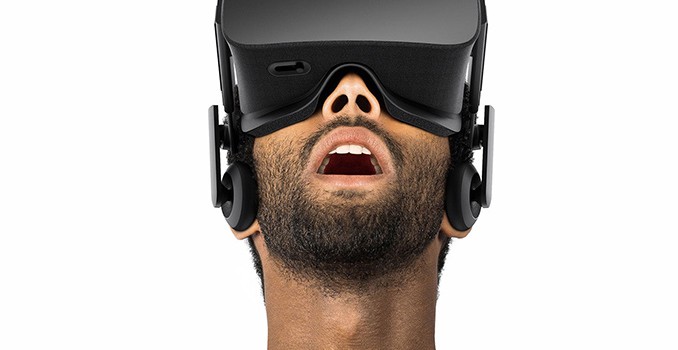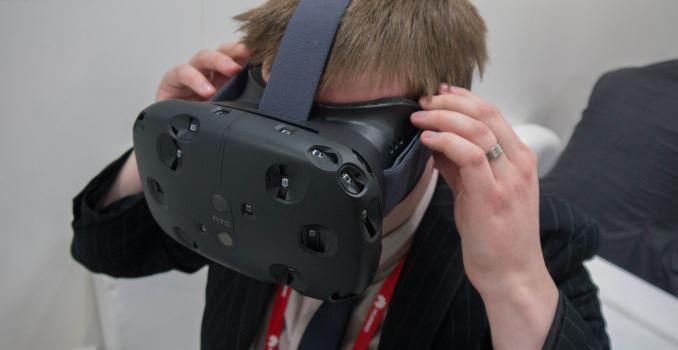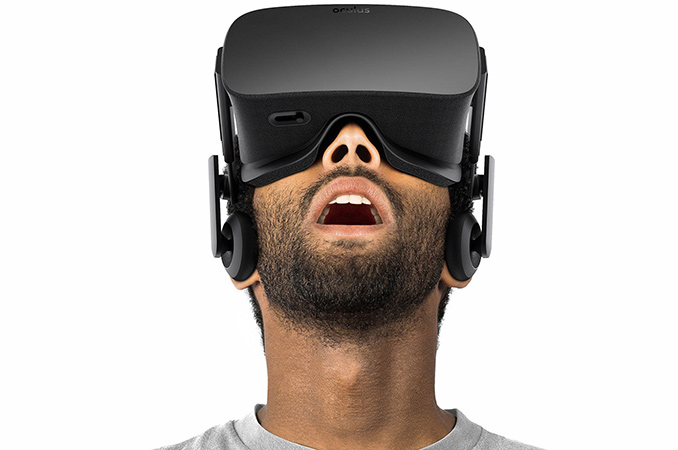
Oculus VR on Wednesday revealed the price of its Oculus Rift virtual reality headset as well as its launch date. The price of the VR hardware appears to be considerably higher than expected by gamers and industry analyst. The developer claims that the high price is conditioned by high costs and the use of custom hardware. However, such price point may slowdown adoption of virtual reality technologies by the masses.
The Oculus Rift bundle includes the VR headset, an Xbox One gamepad, a sensor, the Oculus Remote controller as well as EVE: Valkyrie and Lucky’s Tale VR games. The initial bundle will not include the Oculus Touch controllers, which were recently delayed to the second half of the year. The Oculus Rift virtual reality headset is available for pre-order for $599 on the company’s web-site and will ship starting March 28, 2016, to 20 countries. Select retailers will also sell Oculus Rift hardware in April. In addition, makers of gaming PCs plan to offer Oculus Ready PCs with the headset next month starting at $1499.
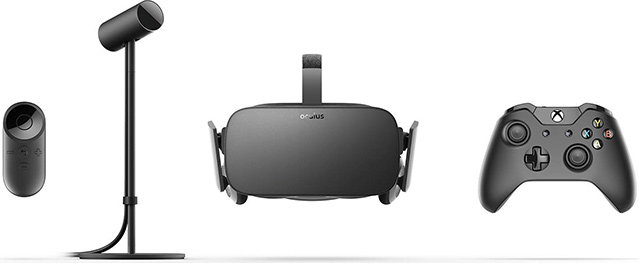
Back in early October, 2015, Palmer Luckey, the founder of Oculus VR, said in an interview that the price of one Oculus Rift headset was in the “$350 ballpark”, but it was “going to cost more than that”. As it appears, the virtual reality head mounted display (HMD) costs nearly two times more than that. The $599 price-point is a yet another indicator that the first-generation VR headsets are expensive to make in general. However, that price is too high for the mass market and for many gamers, believes Jon Peddie, the head of Jon Peddie Research, which tracks sales of graphics adapters and PC gaming hardware.
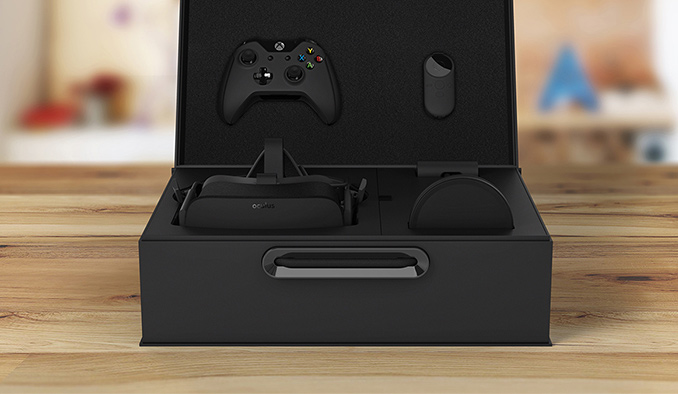
A Lot of Custom Hardware
While the virtual reality HMD is available for pre-order now, Oculus VR still has to confirm its final technical specifications. Based on what the company revealed about six months ago, the Oculus Rift uses two custom AMOLED panels (one per eye) with 2160×1200 resolution and 90 Hz refresh rate (1080×1200 per eye). The AMOLED displays were architected for low persistence, they display each image for about 2 ms in a bid to minimize delays and avoid effects like motion blur, which can cause nausea. The headset also features specially designed adjustable lenses to enable wide field of view. Each headset has integrated headphones and a microphone. Besides, the Oculus Rift sports various sensors, including the company’s own Constellation system based on infrared sensors, which tracks position of the user’s head.
To connect to a PC, the Oculus Rift and devices that accompany it (gamepad, sensor, remote, etc.) use one HDMI 1.3/HDMI 1.4 interconnection, three USB 3.0 interconnections and one USB 2.0 interconnection.
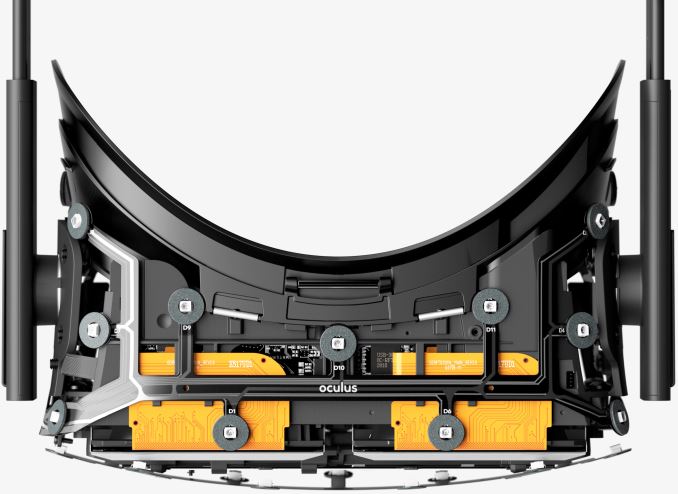
The Oculus Rift virtual reality headset uses a lot of custom components that were designed specifically for this device. For example, the low-persistence AMOLED display panels were co-developed by Oculus and Samsung Electronics. Oculus VR claims that they wanted to make a device that will offer the best virtual reality experience possible today, which is why they tried to avoid any trade-offs or compromises. Due to extensive usage of parts that are not mass-produced today, the cost of each Oculus Rift should be rather high, which is one of the reasons why the headset is priced at $599.
High-End PC Needed
Since the Oculus Rift should run games in 2160×1200 resolution at 90 Hz with minimal latency, it requires a rather powerful personal computer to offer comfortable experience. Oculus VR recommends a PC with a quad-core Intel Core i5-4590 microprocessor (or equivalent), an AMD Radeon R9 290 or NVIDIA GeForce GTX 970 graphics adapter (or equivalent) as well as 8GB of RAM. The company admits that the more powerful your system is, the better experience with Oculus Rift you are going to get.
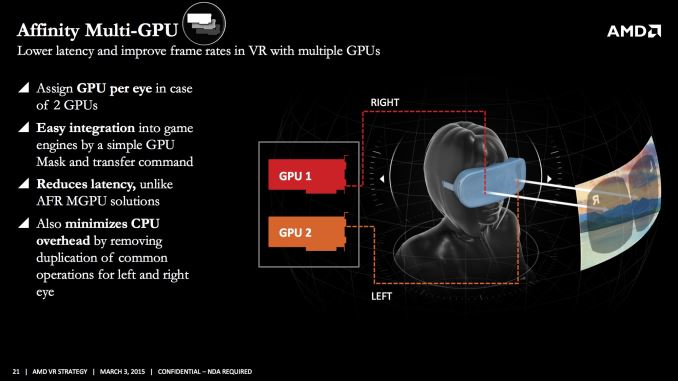
Developers of graphics processing units have implied multiple times that for the best VR experience a dual-GPU graphics sub-system is required today. For example, AMD plans to align release of its new dual-chip Fiji video card with availability of VR headsets in the second quarter. In a dual-GPU graphics sub-system, each graphics chip renders its own part of the scene for one eye. Such approach doubles performance and lowers latency. However, two GPUs also require a more powerful central processing unit as well as a high-end power supply unit.

For makers of computer hardware the launch of the first VR headset for gamers means a chance to improve sales of their higher-end products. Not only manufacturers of video cards or microprocessors can benefit from availability of the Oculus Rift, but also producers of RAM, solid-state drives and motherboards can take advantage of the headset as enthusiasts begin to build their new systems. Unfortunately, significant investments in hardware may slowdown adoption of virtual reality HMDs by both gamers and the general public.
Oculus VR: 100+ Virtual Reality Games to Be Available in 2016
Oculus VR claims that more than 100 games designed for virtual reality and compatible with the Rift are set to be available by the end of 2016, including “dozens of full-length AAA” games. The company does not reveal a lot of names, but in addition to the titles bundled with the VR headset, the firm mentions Rockband VR by Harmonix, Edge of Nowhere by Insomniac, and The Climb by Crytek.
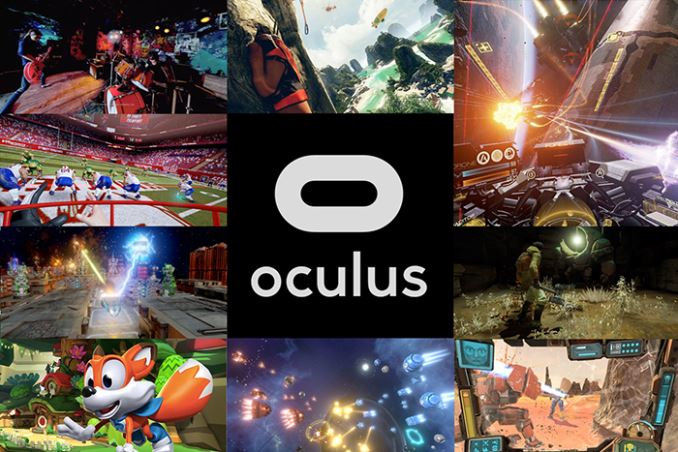
While over a hundred of titles that support VR is a lot, only a handful of them will actually attract users to the platform. Since $599 is a significant investment for many gamers, there should be several compelling titles, which not only demonstrate the technology itself, but make people want to play.
A Lot of Excitement
There is a lot of excitement about virtual reality technologies not only among gamers, but also among developers of hardware and software. While the technology itself has a lot of potential for video games and beyond, the very first Oculus Rift headset is designed primarily for games. The price of the HMD is high for many gamers, but for general users it is prohibitively expensive. Therefore, sales of the device will likely be rather limited. In fact, even Facebook, the owner of Oculus VR, does not expect to sell a lot of VR headsets this year.
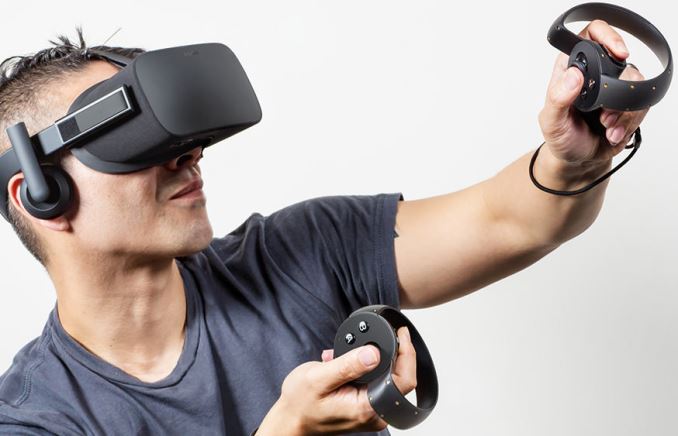
Sales enthusiast-class graphics cards, which cost $399 and higher, total approximately three million units a year, according to Jon Peddie Research. There are many PC gamers nowadays, but only a fraction of them invests thousands of dollars in hardware. Various analysts make different predictions about sales of the first-generation VR gear, some are optimistic and some are pessimistic. For example, according to a report released by Juniper Research several months ago, cumulative sales of VR headsets in their first year of availability (i.e., 2016) will be approximately three million units. There are three major VR devices to be released this year: the Oculus Rift, the Vive from HTC and the PlayStation VR from Sony. It is highly likely that the majority of hardcore enthusiast gamers will buy only one of them. Juniper predicted that cumulative sales of VR headsets will hit around 30 million units by 2020 as hardware and software evolves.
It remains to be seen how many virtual reality head-mounted displays Oculus VR will sell this year. Palmer Luckey said in an interview that the first consumer version of the Oculus Rift was developed to offer great experience and to show potential of the technology to the world. Hopefully, it will deliver to the promise.





